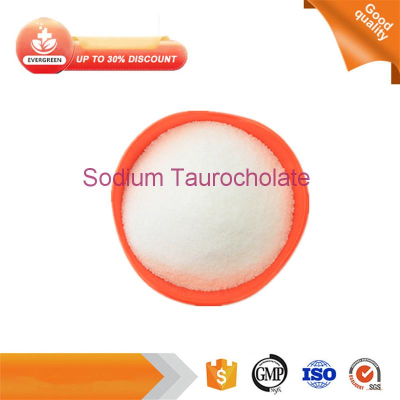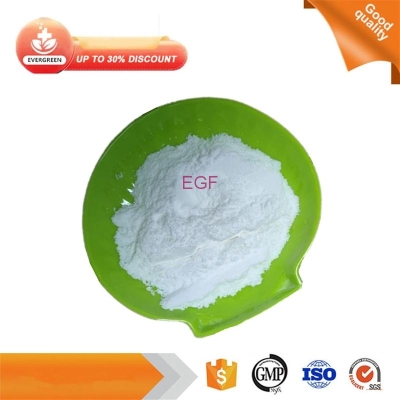-
Categories
-
Pharmaceutical Intermediates
-
Active Pharmaceutical Ingredients
-
Food Additives
- Industrial Coatings
- Agrochemicals
- Dyes and Pigments
- Surfactant
- Flavors and Fragrances
- Chemical Reagents
- Catalyst and Auxiliary
- Natural Products
- Inorganic Chemistry
-
Organic Chemistry
-
Biochemical Engineering
- Analytical Chemistry
- Cosmetic Ingredient
-
Pharmaceutical Intermediates
Promotion
ECHEMI Mall
Wholesale
Weekly Price
Exhibition
News
-
Trade Service
Effects of liver disease on drug action
The effect of liver disease on the effect of the drug The effect of liver disease on the effect of the drugWhen liver function is insufficiency, drug metabolism will inevitably be affected.
Hypoalbuminemia in patients will reduce its binding to drugs, and drug biotransformation will also slow down.
Plasma free drugs will increase and their effects will be enhanced
.
Therefore, it is necessary to reduce the dosage and frequency of medication, especially when administering hepatotoxic drugs, and an individualized dosing regimen should be formulated
When liver function is insufficiency, drug metabolism will inevitably be affected.
Hypoalbuminemia in patients will reduce its binding to drugs, and drug biotransformation will also slow down.
01 01
Pharmacokinetics in hepatic insufficiency
Pharmacokinetics in hepatic insufficiencyabsorb
absorb absorbIn liver disease, increased intrahepatic blood flow resistance, portal hypertension, intrahepatic and extrahepatic portosystemic shunts, and liver parenchyma damage may occur, resulting in decreased hepatic intrinsic clearance
.
The inactivation of endogenous vasoconstrictor active substances in the liver is reduced, and the drug cannot effectively pass through the first-pass effect of the liver, which increases the bioavailability of the drug that is mainly metabolized and cleared in the liver, and at the same time, the blood drug concentration in the body is significantly increased, which affects the drug.
effect, and the incidence of adverse drug reactions may also increase
In liver disease, increased intrahepatic blood flow resistance, portal hypertension, intrahepatic and extrahepatic portosystemic shunts, and liver parenchyma damage may occur, resulting in decreased hepatic intrinsic clearance
In liver disease, the protein synthesis function of the liver decreases, and the concentration of albumin in the plasma decreases, so that the plasma protein binding rate of the drug decreases, the bound drug in the blood decreases, and the free drug increases, although the plasma concentration may be within the normal range.
, but the concentration of active free drug increases, which strengthens the effect of the drug, and at the same time, adverse reactions may also increase accordingly, especially for drugs with high protein binding rate, the impact is more significant
metabolism metabolism
In liver disease, the number of hepatocytes is reduced, the function of hepatocytes is damaged, and the activity and quantity of most drug enzymes in hepatocytes, especially the cytochrome P450 enzymes, can be reduced to varying degrees, so that they are mainly eliminated by liver metabolism.
The metabolic rate and degree of the drug are reduced, the elimination half-life is prolonged, and the blood drug concentration is increased.
Long-term use can also cause accumulation poisoning
In liver disease, the number of hepatocytes is reduced, the function of hepatocytes is damaged, and the activity and quantity of most drug enzymes in hepatocytes, especially the cytochrome P450 enzymes, can be reduced to varying degrees, so that they are mainly eliminated by liver metabolism.
The metabolic rate and degree of the drug are reduced, the elimination half-life is prolonged, and the blood drug concentration is increased.
Long-term use can also cause accumulation poisoning
02 02
Pharmacodynamic characteristics of hepatic insufficiency
Pharmacodynamic characteristics of hepatic insufficiencyIn chronic liver disease, the synthesis of plasma albumin decreases, and the protein binding rate of the drug decreases.
When the drug dose in the therapeutic range is applied, the free blood drug concentration is relatively increased, which not only enhances the pharmacological effect, but also may correspondingly increase the incidence of adverse reactions.
increase
In chronic liver disease, the synthesis of plasma albumin decreases, and the protein binding rate of the drug decreases.
When the drug dose in the therapeutic range is applied, the free blood drug concentration is relatively increased, which not only enhances the pharmacological effect, but also may correspondingly increase the incidence of adverse reactions.
Dosing regimen adjustment in patients with hepatic insufficiency Dosing regimen adjustment in patients with hepatic insufficiency
01
01 01Methods of assessing liver function
Methods for assessing liver function Methods for assessing liver functionCommonly used indicators are ALT , AST , ALP and BIL
.
.
When: ALT > 3 ULN → sensitive and specific indicator of liver damage
.
.
ALT > 8 ~ 10 ULN → severe damage to liver function
.
.
Or: when ALT > 3 ULN and BIL > 2 ULN → severe liver function damage
.
.
The Child-Turcotte - Pugh ( CTP ) score was used as an assessment system for grading liver insufficiency
.
.
It was based on five indicators
including ascites, encephalopathy, nutritional status, serum bilirubin and serum albumin .
CTP Scoring Criteria
including ascites, encephalopathy, nutritional status, serum bilirubin and serum albumin .
CTP Scoring Criteria
02
02 02Principles of medication for patients with hepatic insufficiency
Principles of medication for patients with hepatic insufficiency Principles of medication for patients with hepatic insufficiency( 1 ) Clear diagnosis and rational drug use
.
( 2 ) Avoid or reduce the use of drugs that are highly toxic to the liver .
( 3 ) Pay attention to drug interactions, in particular, avoid combination with hepatotoxic drugs .
( 4 ) Patients with hepatic insufficiency and normal renal function can choose drugs that are less toxic to the liver and excreted from the kidneys .
( 5 ) The initial dose should be small, and TDM should be performed if necessary , so that the dosing schedule can be individualized .
( 6 ) Monitor liver function regularly and adjust treatment plan in time .
.
Diagnosis ( 2 ) Avoid or reduce the use of drugs that are highly toxic to the liver .
( 3 ) Pay attention to drug interactions, in particular, avoid combination with hepatotoxic drugs .
( 4 ) Patients with hepatic insufficiency and normal renal function can choose drugs that are less toxic to the liver and excreted from the kidneys .
( 5 ) The initial dose should be small, and TDM should be performed if necessary , so that the dosing schedule can be individualized .
( 6 ) Monitor liver function regularly and adjust treatment plan in time .
03
03 03Dosage adjustment for hepatic insufficiency
Dosage adjustment for hepatic insufficiency Dosage adjustment for hepatic insufficiency( 1 ) Adjust dosage according to biochemical indicators
( 1 ) Adjust dosage according to biochemical indicatorsIt is generally believed that when ALT>8~10ULN (ULN: upper limit of normal range ) or ALT>3ULN and BIL>2ULN , it indicates that liver function damage has occurred
.
The following table summarizes some drug information for dose adjustment based on biochemical test results: Dosage adjustment method based on biochemical test results and some drugs in hepatic insufficiency
.
The following table summarizes some drug information for dose adjustment based on biochemical test results: Dosage adjustment method based on biochemical test results and some drugs in hepatic insufficiency
( 2 ) Dose adjustment according to CTP score
( 2 ) Dose adjustment according to CTP scoreClass A patients: use 50% of the maintenance dose of normal patients;
Class A patients: use 50% of the maintenance dose of normal patients;Class B patients: 25% of the maintenance dose ;
Class B patients: 25% of the maintenance dose ;Class C patients: Drugs that have been proven to be safe in clinical trials or whose pharmacokinetics are not affected by liver disease or can be effectively monitored should be used
.
Medications to adjust dose based on CTP score
.
Medications to adjust dose based on CTP score
04
04 04Drugs to be used with caution in patients with liver disease
Drugs to be used with caution in patients with liver disease Drugs to be used with caution in patients with liver disease05
05 05Adjustment of dosing regimen for patients with hepatic insufficiency
Adjustment of dosing schedule for patients with hepatic insufficiency①Drugs that are cleared by the liver but have no obvious toxic reactions should be used with caution, and the dose should be reduced if necessary
.
②The drug is cleared by the liver or the equivalent dose is cleared by the liver.
When the liver function decreases, its clearance or metabolite formation is reduced.
Drugs that can cause obvious toxic reactions should be avoided as much as possible when there is liver disease .
Studies have shown that some drugs have decreased renal clearance in patients with cirrhosis, such as cephalosporin, cilazapril, fluconazole, lithium, and ofloxacin .
③ The blood concentration of drugs cleared by the two pathways of liver and kidney increases in severe liver dysfunction.
In addition, these patients are often accompanied by functional renal insufficiency, which can increase the blood drug concentration more significantly, so the application should be reduced .
④ The dose of drugs excreted by the kidneys generally does not need to be adjusted when liver dysfunction occurs .
However, when the drugs with obvious nephrotoxicity are used in patients with severe liver dysfunction, caution or dose reduction is still required to prevent the occurrence of hepatorenal syndrome .
Attached is a schematic diagram of the flow chart of the formulation of the dosing regimen in the case of hepatic insufficiency:
.
②The drug is cleared by the liver or the equivalent dose is cleared by the liver.
When the liver function decreases, its clearance or metabolite formation is reduced.
Drugs that can cause obvious toxic reactions should be avoided as much as possible when there is liver disease .
Studies have shown that some drugs have decreased renal clearance in patients with cirrhosis, such as cephalosporin, cilazapril, fluconazole, lithium, and ofloxacin .
③ The blood concentration of drugs cleared by the two pathways of liver and kidney increases in severe liver dysfunction.
In addition, these patients are often accompanied by functional renal insufficiency, which can increase the blood drug concentration more significantly, so the application should be reduced .
④ The dose of drugs excreted by the kidneys generally does not need to be adjusted when liver dysfunction occurs .
However, when the drugs with obvious nephrotoxicity are used in patients with severe liver dysfunction, caution or dose reduction is still required to prevent the occurrence of hepatorenal syndrome .
Attached is a schematic diagram of the flow chart of the formulation of the dosing regimen in the case of hepatic insufficiency:
leave a message here







